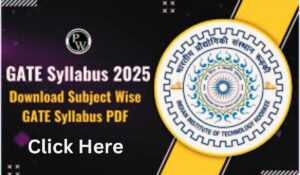CBSE Class 12 Chemistry Exam 2025: CBSE Class 12th Chemistry Significant MCQs: The CBSE Class 12th Chemistry Board Examination for 2025 necessitates comprehensive preparation, particularly with Multiple-Choice Questions (MCQs), which are crucial for achieving high scores. To assist students in their preparation, we have curated a selection of the top 50 MCQs derived from previous years’ examination papers and CBSE sample papers, accompanied by thorough explanations of the answers. These essential MCQs encompass key topics from all chapters, facilitating effective revision before the examination. Engaging with these high-weightage questions will enhance your confidence and elevate your performance in the exam.
CBSE Class 12 Chemistry Exam 2025: Key Highlights

| Particulars | Details |
| Exam Conducting Body | CBSE Class 12 Chemistry Exam 2025 (CBSE) |
| Subject | Chemistry |
| Mode of Exam | Offline |
| Exam Duration | 3 Hours |
| Medium of Exam | English / Hindi |
| Type of Questions | MCQs, Short and Long Answer Type Questions |
| Theory Marks | 80 |
| Internal Assessment | 20 |
| Total Marks | 100 |
| Passing Marks | 33% in aggregate |
CBSE Exam Top 50 MCQs with Answers
Below are 50 significant multiple-choice questions (MCQs) from the entire 12th Chemistry syllabus, along with their respective answers:
- Which of the following is classified as a colligative property?
a) Surface tension
b) Osmotic pressure
c) Viscosity
d) Density
Ans: (b) Osmotic pressure - What is the unit of molality?
a) mol/L
b) mol/kg
c) g/L
d) kg/mol
Ans: (b) mol/kg - Which law describes the solubility of gases in liquids?
a) Henry’s law
b) Raoult’s law
c) Dalton’s law
d) Boyle’s law
Ans: (a) Henry’s law - What type of deviation is exhibited by a mixture of ethanol and water?
a) Positive
b) Negative
c) No deviation
d) None of these
Ans: (a) Positive - The Van’t Hoff factor (i) for K₂SO₄ in water is:
a) 1
b) 2
c) 3
d) 4
Ans: (c) 3 - Which of the following statements regarding a galvanic cell is accurate?
a) Oxidation takes place at the cathode
b) Reduction occurs at the anode
c) Electrons move from the anode to the cathode
d) The anode is positively charged
Answer: (c) Electrons move from the anode to the cathode - What is the standard electrode potential of the hydrogen electrode?
a) 0.00 V
b) 1.00 V
c) -0.76 V
d) 0.34 V
Answer: (a) 0.00 V
Which electrolyte is utilized in a dry cell?
a) H₂SO₄
b) KOH
c) NH₄Cl
d) NaOH
Answer: (c) NH₄Cl
- Which of the following is classified as a primary cell?
- a) Lead storage battery
b) Fuel cell
c) Dry cell
d) Nickel-cadmium cell
Answer: (c) Dry cell - Which law is applied to ascertain the mass of a substance deposited during electrolysis?
a) Henry’s law
b) Faraday’s law
c) Raoult’s law
d) Nernst equation
Answer: (b) Faraday’s law - The rate of a reaction is influenced by:
a) Temperature
b) Concentration
c) Catalyst
d) All of the above
Answer: (d) All of the above - What is the unit of the rate constant for a first-order reaction?
a) s⁻¹
b) mol L⁻¹ s⁻¹
c) L mol⁻¹ s⁻¹
d) L² mol⁻² s⁻¹
Answer: (a) s⁻¹ - The half-life of a first-order reaction is:
b) Independent of the initial concentration
c) Inversely proportional to the initial concentration
d) Dependent on pressure
Answer: (b) Independent of the initial concentration - The Arrhenius equation illustrates the impact of __ on the rate of reaction.
a) Catalyst
b) Temperature
c) Pressure
d) Concentration
Answer: (b) Temperature - Activation energy refers to the:
a) Minimum energy necessary for a reaction to take place
b) Maximum energy needed for a reaction
c) Energy associated with the reactants
d) Energy associated with the products
Answer: (a) Minimum energy necessary for a reaction to take place - Which of the following elements is not classified as a transition metal?
a) Fe
b) Zn
c) Cr
d) Mn
Answer: (b) Zn - KMnO₄ serves as:
a) Reducing agent
b) Oxidizing agent
c) Both
d) None
Answer: (b) Oxidizing agent - The phenomenon of lanthanide contraction is attributed to:
a) Ineffective shielding by 4f electrons
b) Elevated nuclear charge
c) Both (a) and (b)
d) None of these
Answer: (c) Both (a) and (b) - Which of the following elements is radioactive?
a) Ce
b) U
c) La
d) Y
Answer: (b) U - Identify the transition element from the following options:
a) Ca
b) Sc
c) Na
d) K
Answer: (b) Sc - Which of the following is classified as a chelating ligand?
a) CN⁻
b) EDTA
c) NH₃
d) Cl⁻
Answer: (b) EDTA - Which theory elucidates the color and magnetic characteristics of coordination compounds?
a) VBT
b) Crystal field theory
c) Molecular orbital theory
d) Band Theory
Answer: (b) Crystal field theory - The oxidation state of Co in [Co(NH₃)₆]³⁺ is:
a) +1
b) +2
c) +3
d) 0
Answer: (c) +3 - Which of the following is an example of a bidentate ligand?
a) NH₃
b) C₂O₄²⁻
c) CN⁻
d) Cl⁻
Answer: (b) C₂O₄²⁻ - Which ligand results in the greatest crystal field splitting?
a) CN⁻
b) Cl⁻
c) H₂O
d) OH⁻
Answer: (a) CN⁻ - Which of the following compounds is most likely to undergo an SN1 reaction?
a) CH₃Cl
b) (CH₃)₃CBr
c) CH₃CH₂Br
d) CH₃CH₂Cl
Answer: (b) (CH₃)₃CBr - Which substance is utilized as an anaesthetic?
a) CHCl₃
b) CCl₄
c) CH₂Cl₂
d) CF₂Cl₂
Answer: (a) CHCl₃ - Which of the following compounds is most susceptible to nucleophilic substitution?
a) Benzyl chloride
b) Vinyl chloride
c) Chloroethane
d) Chlorobenzene
Answer: (a) Benzyl chloride - Freons are primarily employed as:
a) Antiseptics
b) Refrigerants
c) Fertilizers
d) Medicines
Answer: (b) Refrigerants - DDT is classified as a:
a) Polymer
b) Pesticide
c) Antibiotic
d) Fuel
Answer: (b) Pesticide - Phenol exhibits greater acidity than ethanol due to:
a) The resonance stabilization of the phenoxide ion
b) The resonance stabilization of the ethoxide ion
c) Both compounds having equal acidity
d) Phenol’s inability to release H⁺ ions
Answer: (a) The resonance stabilization of the phenoxide ion - Which reagent is employed to differentiate between alcohols and phenols?
a) Fehling’s solution
b) Iodoform test
c) Neutral FeCl₃
d) Lucas reagent
Answer: (c) Neutral FeCl₃ - Which compound is commonly referred to as wood spirit?
a) Ethanol
b) Methanol
c) Phenol
d) Glycerol
Answer: (b) Methanol - Ethers can be cleaved by:
a) Dilute H₂SO₄
b) Concentrated HBr
c) NaOH
d) KMnO₄
Answer: (b) Concentrated H - Which of the following substances is utilized as an antiseptic?
a) Benzene
b) Phenol
c) Ethanol
d) Ether
Answer: (b) Phenol - Which test is employed to differentiate between aldehydes and ketones?
a) Lucas test
b) Tollens’ test
c) Fehling’s test
d) Both (b) and (c)
Answer: (d) Both (b) and (c) - Which of the following compounds is subject to the iodoform test?
a) Benzaldehyde
b) Acetone
c) Formaldehyde
d) Ethanol
Answer: (b) Acetone - Among the following, which substance has the highest boiling point?
a) Alcohol
b) Aldehyde
c) Ketone
d) Ether
Answer: (a) Alcohol - What is the functional group characteristic of carboxylic acids?
a) –OH
b) –COOH
c) –CHO
d) –CO–
Answer: (b) –COOH - The reduction of aldehydes results in the production of:
a) Alcohols
b) Ketones
c) Carboxylic acids
d) Esters
Answer: (a) Alcohols - Which type of amine reacts with Hinsberg reagent to yield a soluble product?
a) Primary amine
b) Secondary amine
c) Tertiary amine
d) Quaternary ammonium salt
Answer: (a) Primary amine - Which reagent is utilized to transform nitrobenzene into aniline?
a) LiAlH₄
b) Zn/HCl
c) K₂Cr₂O₇
d) NaOH
Answer: (b) Zn/HCl - Which of the following amines exhibits the highest basicity?
a) NH₃
b) CH₃NH₂
c) C₆H₅NH₂
d) (C₂H₅)₂NH
Answer:d) (C₂H₅)₂NH - What is the outcome of the reaction between aniline and bromine water?
a) o-Bromoaniline
b) p-Bromoaniline
c) 2,4,6-Tribromoaniline
d) Aniline does not undergo a reaction with bromine water
Answer: (c) 2,4,6-Tribromoaniline - Which of the following represents a secondary amine?
a) NH₃
b) CH₃NH₂
c) (CH₃)₂NH
d) (CH₃)₃N
Answer: (c) (CH₃)₂NH - Glucose is classified as:
a) Disaccharide
b) Monosaccharide
c) Polysaccharide
d) Protein
Answer: (b) Monosaccharide - Which of the following does NOT qualify as a polysaccharide?
a) Starch
b) Glycogen
c) Cellulose
d) Sucrose
Answer: (d) Sucrose - The linkage between two amino acids in a protein is referred to as:
a) Glycosidic bond
b) Peptide bond
c) Phosphodiester bond
d) Hydrogen bond
Answer: (b) Peptide bond - Which of the following is categorized as an essential amino acid?
a) Glycine
b) Alanine
c) Lysine
d) Proline
Answer: (c) Lysine - Which nucleic acid plays a crucial role in protein synthesis?
a) DNA
b) tRNA
c) rRNA
d) Both (b) and (c)
Answer: (d) Both (b) and (c)
This concludes the compilation of the 50 most significant multiple-choice questions from all chapters in Class 12 Chemistry.





